In a time where users spend approximately 7.5 hours a day consuming media, social media sites have more power than ever before to be major influences both on and offline. The link between social media and self-image has long been realized, however, the power of social media to encourage practices of disordered eating and self-harm is somewhat less established.
Recent studies of social media’s power to foster online communities for eating disorders that carry out into real-world behaviors have focused on the consequences of such pro-eating disorder (ED) media, and the difficulties that these sites face in dismantling them.
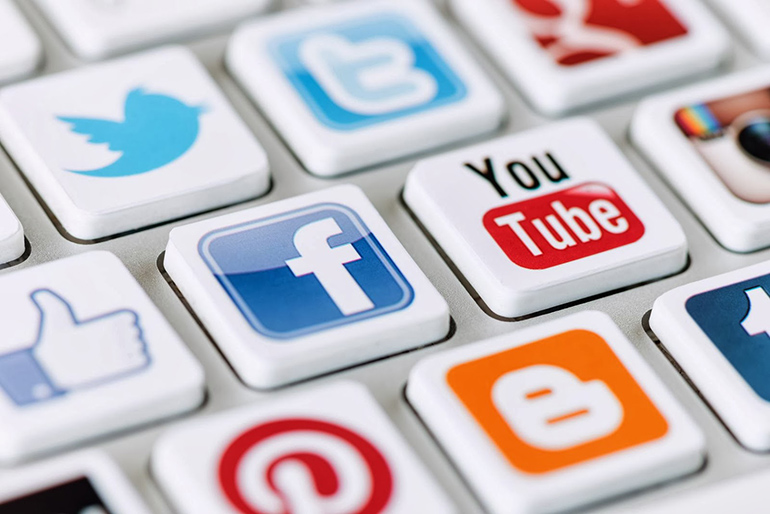
Photo courtesy of uvmbored.com
The problematic relationship between social media and eating disorders is twofold. On one hand, the image-heavy layout of sites such as Instagram, Tumblr, and Facebook drowns users in photos that encourage them to compare their own lives to those of friends and celebrities alike.
Observation and internalization of the “ideal” body has been correlated with body dissatisfaction and disordered eating; the proliferation of such social media sites are forceful proponents of the rising rates of eating disorders among young adults and teens.
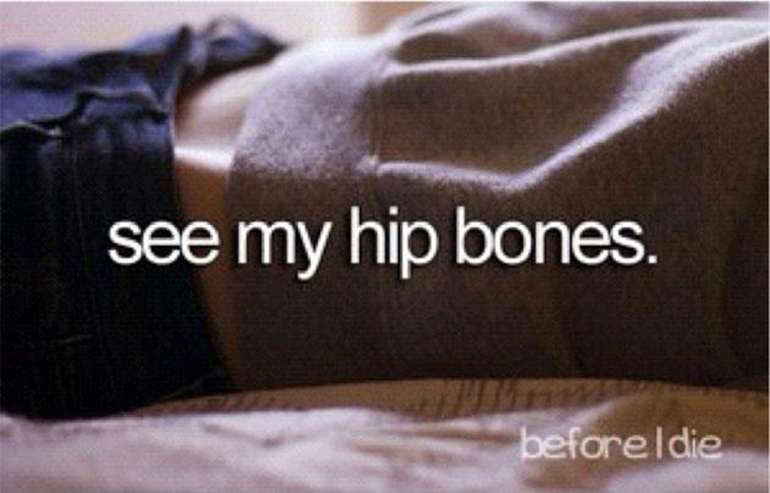
Photo courtesy of medicaldaily.com
But image-driven media isn’t a one-way information dump. Users are more than just consumers of these photos: they have the power to interact with one another and form communities that, in some cases, cement disordered thinking and behaviors. “Thinspiration” images posted by “pro-ana” or “pro-mia” accounts encourage practices of disordered eating and offer users a community to share their distorted body goals as well as tips to achieve them.
These communities further entrench unhealthy habits by encouraging comparison and competition in terms of weight loss and restriction; the “support” that members offer one another both normalizes and bolsters these practices.
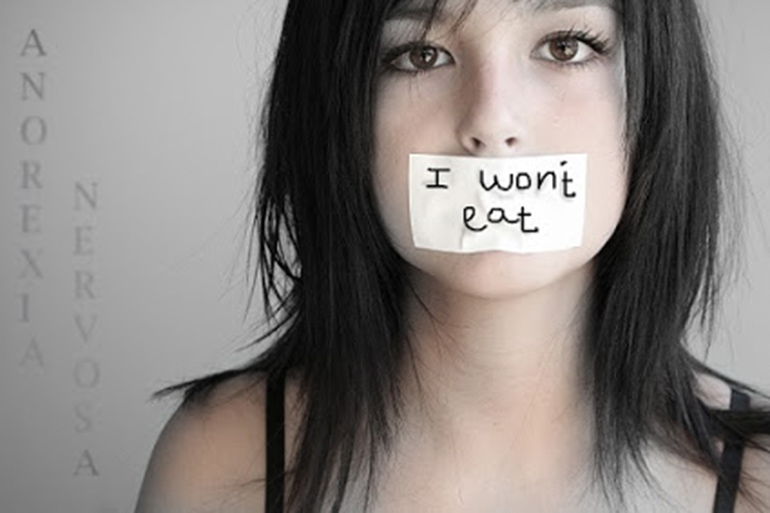
Photo courtesy of reglam.me
Images searchable by hashtags such as #ana, #thinspiration, #thighgap, or even #41daysofstarvation help new users find their way into such communities and drag them down the rabbit hole of comparison, competition, and self-harm.
These images were easily accessible by all users on Instagram until April 2012, when the website made such tags unsearchable, added content warnings to triggering photos, and disabled pro-ED disorder accounts. This change came right on the heels of Tumblr’s March announcement that it would disable blogs involved in the “active promotion or glorification of self-harm.”
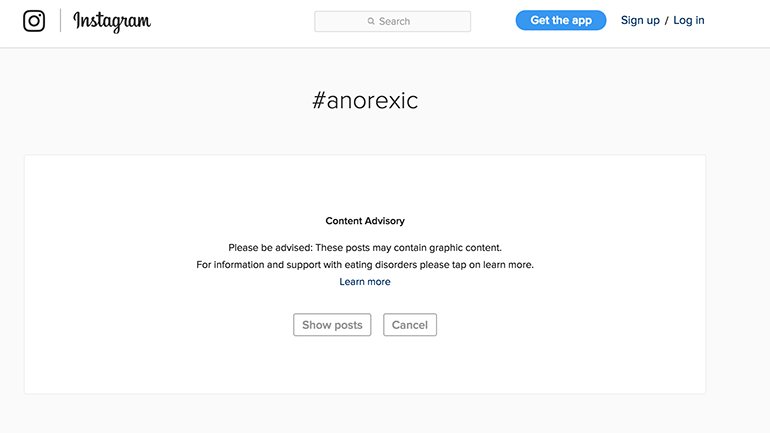
Photo by Hailey Maher
Without the ability to tag their posts as #ana or #thinspo, the community would be less accessible and thus decrease in size, right?
Wrong.
The bans and content advisories may have slowed the growth of pro-ED communities, but did little to stop them. Researchers studying the effects of such restrictions saw firsthand the resilience of these communities to overcome such roadblocks – of the 17 hashtags that banned, each had been replaced by about 40 spin-offs of the initial tag.
The #anorexic hashtag was especially fruitful, spawning 99 variations (including #anorexique and #anorexica), while the tag #thighgap created 107 new tags ranging from #thygap to #thighgapss.
Troublingly, the new tags received even more attention than the old, with 15 percent more comments and 30 percent more likes overall. The researchers concluded that Instagram had been “mostly ineffective” at combating the growth of pro-ED postings and communities.

Photo courtesy of lighthouserecoveryinstitute.com
Social media sites face a tricky situation that precludes obvious solutions. Clearly, the bans of triggering tags failed to minimize the occurrences of self-harm-encouraging media and even made the community less easy to identify through its development of more and more varied hashtags.
Munmun De Choudary, a co-author of the aforementioned study, suggests switching to an approach more focused on flagging triggering posts with public service announcements and links to resources such as the National Eating Disorders Association’s website.
Furthermore, she recommends deeper intervention through the development of algorithms that could fill a pro-ana user’s Instagram feed with recovery photos or shoot a pop-up message to a Tumblr user who seems to be creating a pro-ED post.
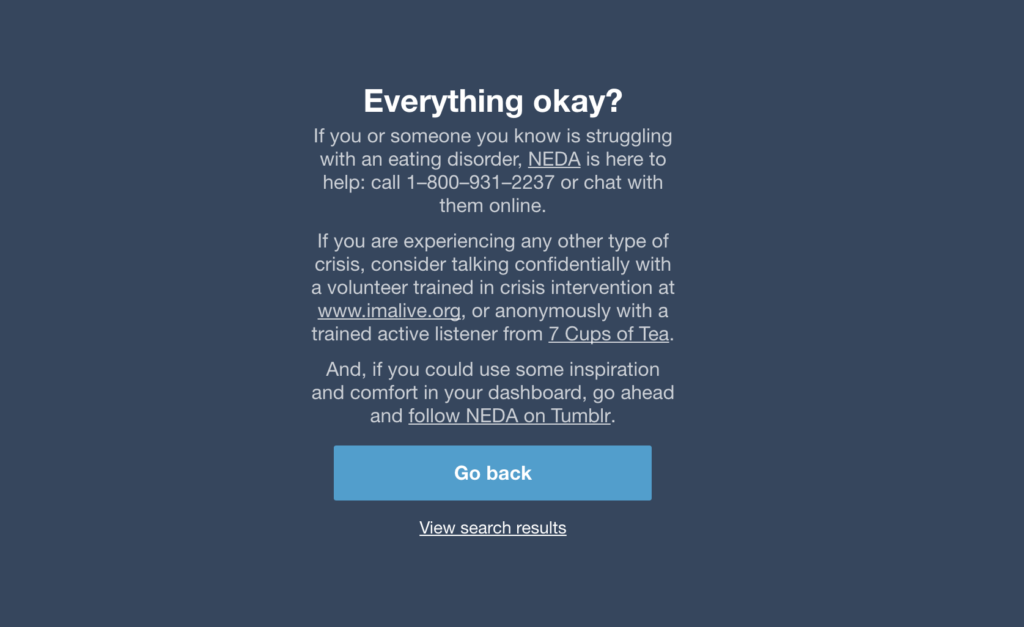
Photo by Hailey Maher
The question of how far a social media site can intervene into any user’s profile remains up for debate. Consider, for example, the backlash that Instagram suffered upon the announcement of its switch to an algorithm-based feed – users expect to be able to post and view the content they want when and how they choose. Switching to such an invasive algorithm could discourage them from posting altogether, which would be disastrous for any social media website’s bottom line.
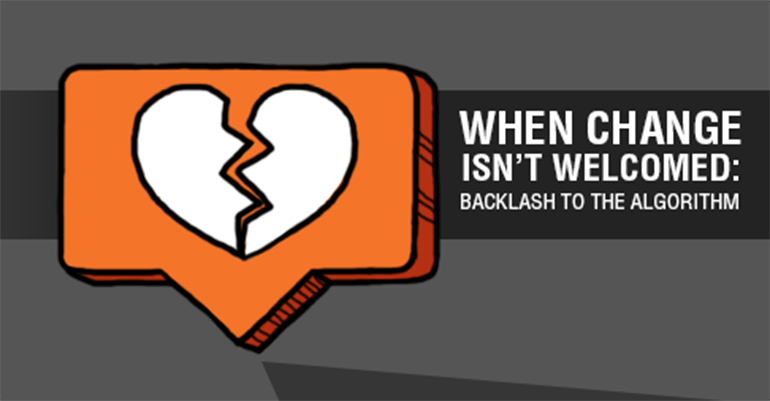
Photo courtesy of tbsmo.com
The most promising change seems to come from expressions of acceptance and tolerance rather than the restriction of any particular content. For example, Tumblr’s 2015 “Post It Forward” campaign backed by celebrities such as Elizabeth Banks enjoyed relative success.
Users are, obviously, the strongest forces in causing social change through their networks, and may be the best counterforce against the pro-ED movement. Pro-recovery accounts on Instagram and Tumblr have become tools through which users can document their recovery from eating disorders as well as spread positivity and support to the online community.
While #anorexia may have given birth to a slew of other hashtags, its power is being diminished by the proliferation of pro-recovery hashtags such as #recovery and #positivity.
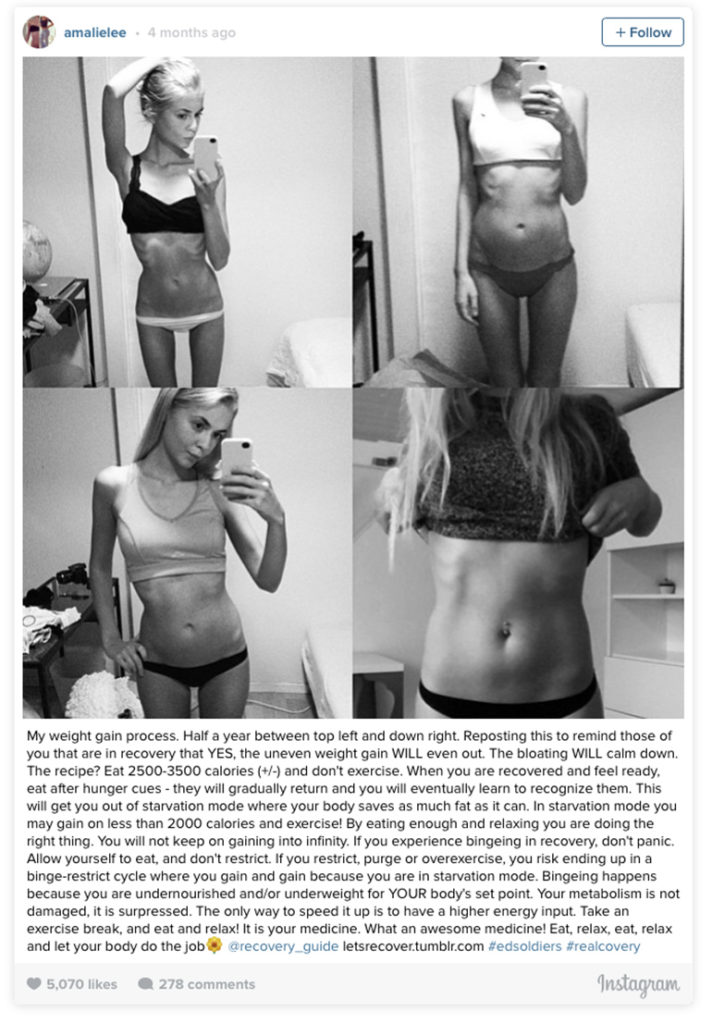
Photo courtesy of thestyleinsider.co
Another channel through which this epidemic may be fed is Snapchat. Although it does not offer the same community-building possibility that more interactive sites are formatted around, users make use of other auxiliary platforms to meet and then continue to interact through the app.
A simple Google search brings up forums (some of which exist on aforementioned the social media channels) through which users exchange Snapchat usernames and drastic weight loss goals. The very goal of the photo exchange service, to connect people near and far, may be feeding into the phenomenon that is enabling the formation of pro-ED communities on other sites.
Snapchat also mirrors other social media formats in its heavy reliance on images, providing a channel through which users compare their lives to those of others, which may not be truthful indicators of health or even reality. For example, Kylie Jenner came under scrutiny earlier this year after posting a Snapchat story of her tiny waist, which some viewed as promoting body dysmorphia and disordered eating practices.
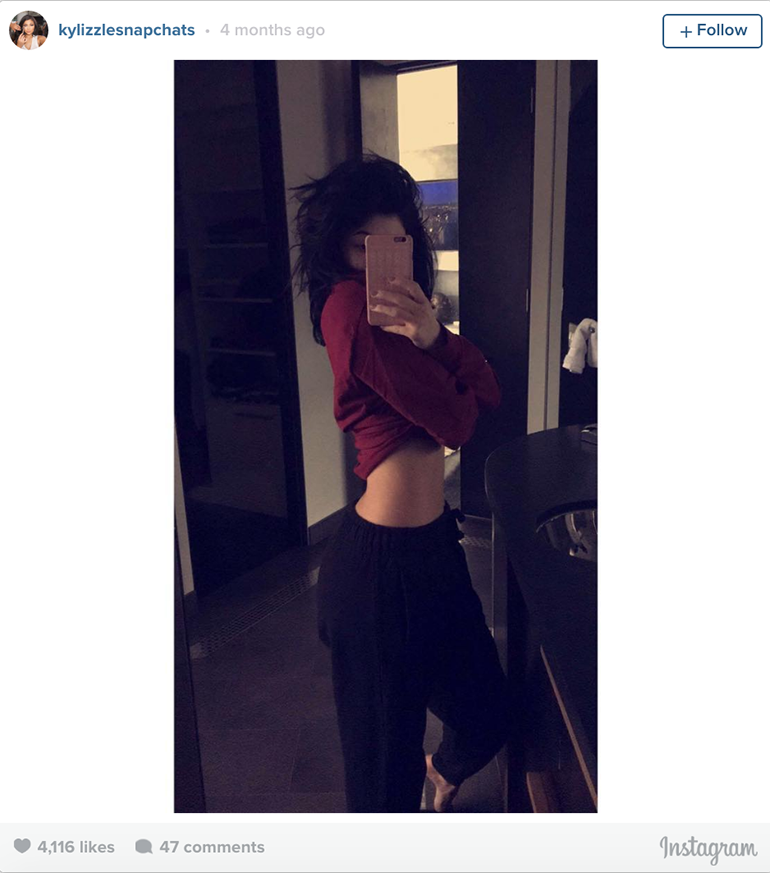
Photo courtesy of @kylizzlesnapchats on Instagram
While social media presents a challenge to society’s physical and mental well-being, it’s only a symptom of the overall problem. It’s safe to say that short of a miraculously sudden societal overhaul, young adults will continue to seek communities to find support for their disordered eating and self-harm practices.
Social media is inherently a way for us to compare ourselves to one another, especially in terms of things we can physically see, which makes it especially apt for the encouragement of disorders that are so visually based. But the recent explosion of recovery and self-love accounts provide hope that user-based change is not just possible, but likely, and can occur more quickly than previously imagined.
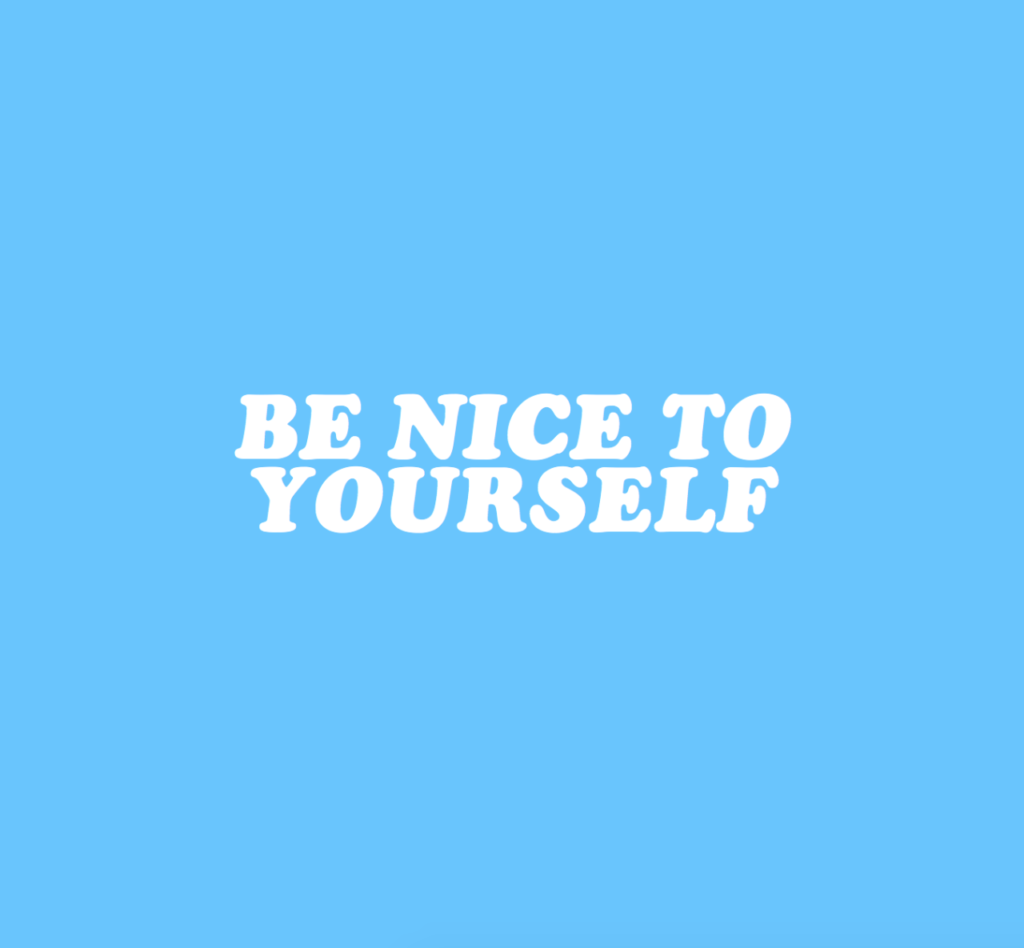
Photo courtesy of postitforward.tumblr.com

